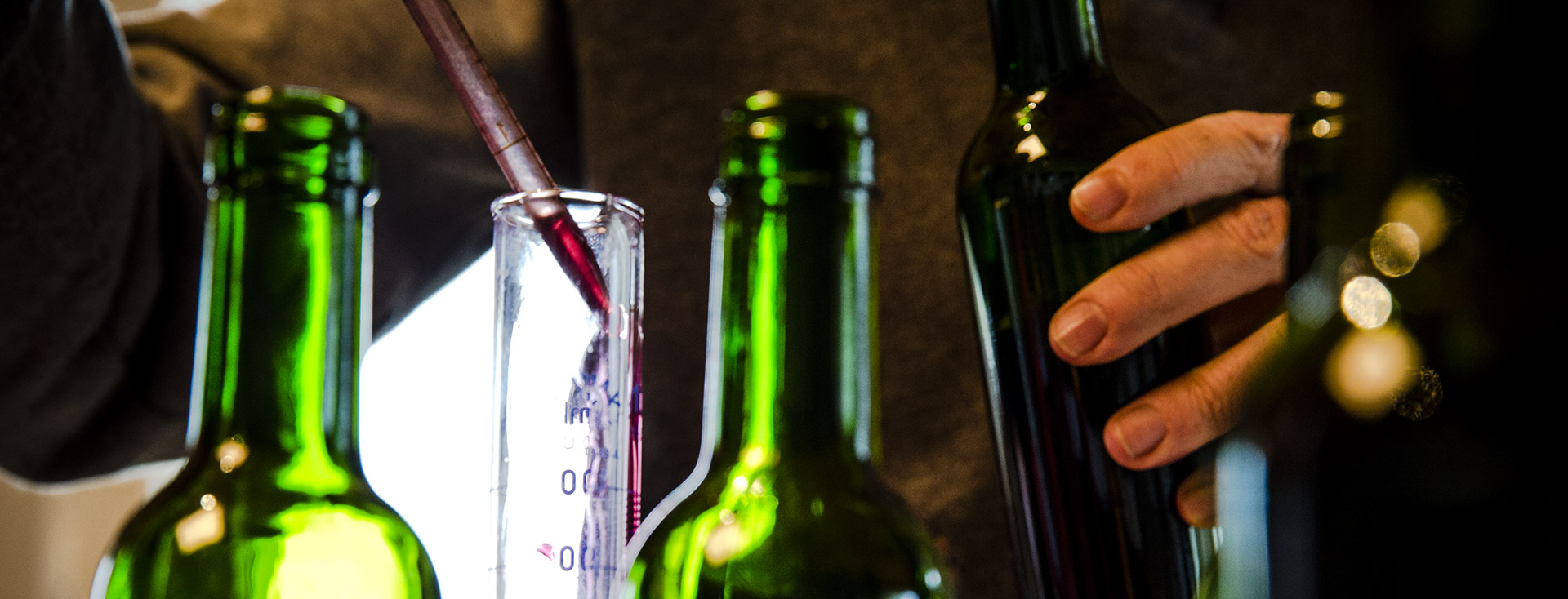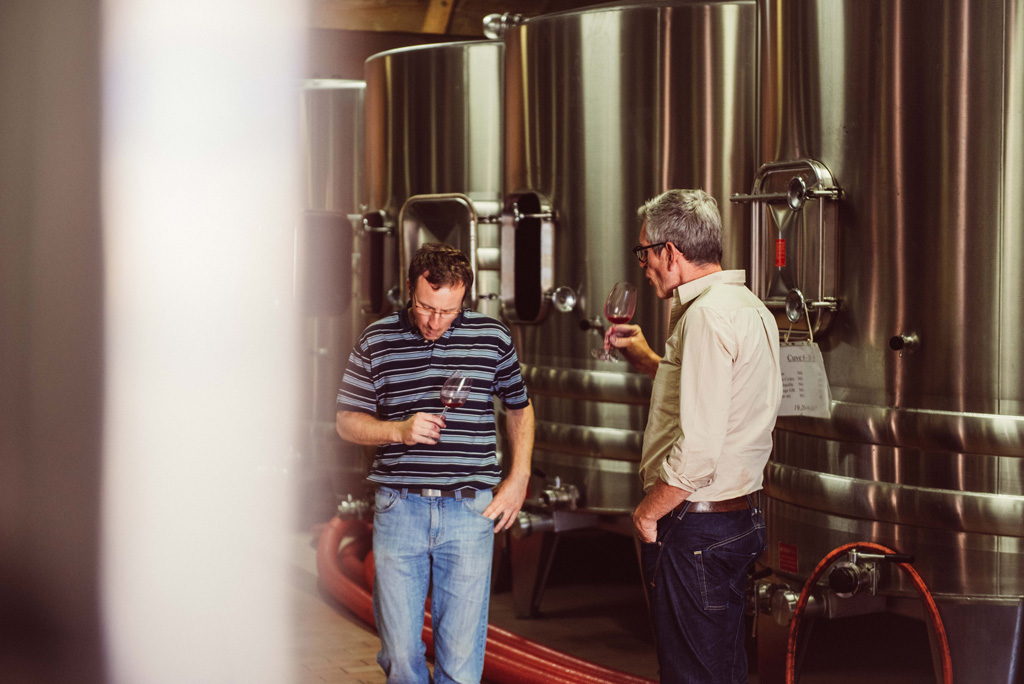“The past remains, the future comes to life in advance, the present is eternity.” Johann Wolfgang von Goethe

BLENDING
Comments
“
The blend is therefore the active stage that is closest to the end result, and at the same time also marks a starting point. Some painters finish their paintings then put them to one side for months, sometimes even years, before releasing them. This is perhaps a way of looking at them with fresh eyes, because they know that they are not yet able to provide what the painting needs.

This is the order we do things
After malolactic fermentation in early winter, we carry out an initial blind tasting of all the batches. Because we know the history of each vat, the provenance of the grapes, and how they behaved during fermentation and maceration, and because we do not want this knowledge to influence our thinking, blind tasting is vital to avoid any preconceived ideas. This is the opportunity for our first sorting of what we think should definitely go into the blend for the top wine and what seems best suited to the second wine. There are also question marks over some vats, which need a little more maturation time before we can make a decision. We then repeat this exercise with our consultant oenologist, but without the labels hidden. We get his opinion and refine our own. The next step is putting all of this together. The blend is defined in broad strokes.
We then leave the maturation to do its work and start up again in early September, before the next harvest and above all before the energy of fermentation grabs hold of the winery and our work. This allows us to confirm, adjust and refine our intentions and harmonise the result.
As the next winter arrives, it is time to finish the blend. The wine has already been built. All that remains is to find the cornerstone that I mention in the heritage section. That tiny touch of consistency truly makes everything complete. Because what sets a great wine apart from a good wine is the refinement of its aromatic expression and the silkiness of its structure. Blending is my favourite part of the job. Every time, it gently but determinedly brings me back to our role on this earth, which lies almost exclusively in details and awareness.”
Alain Moueix

Nathalie Bas©



